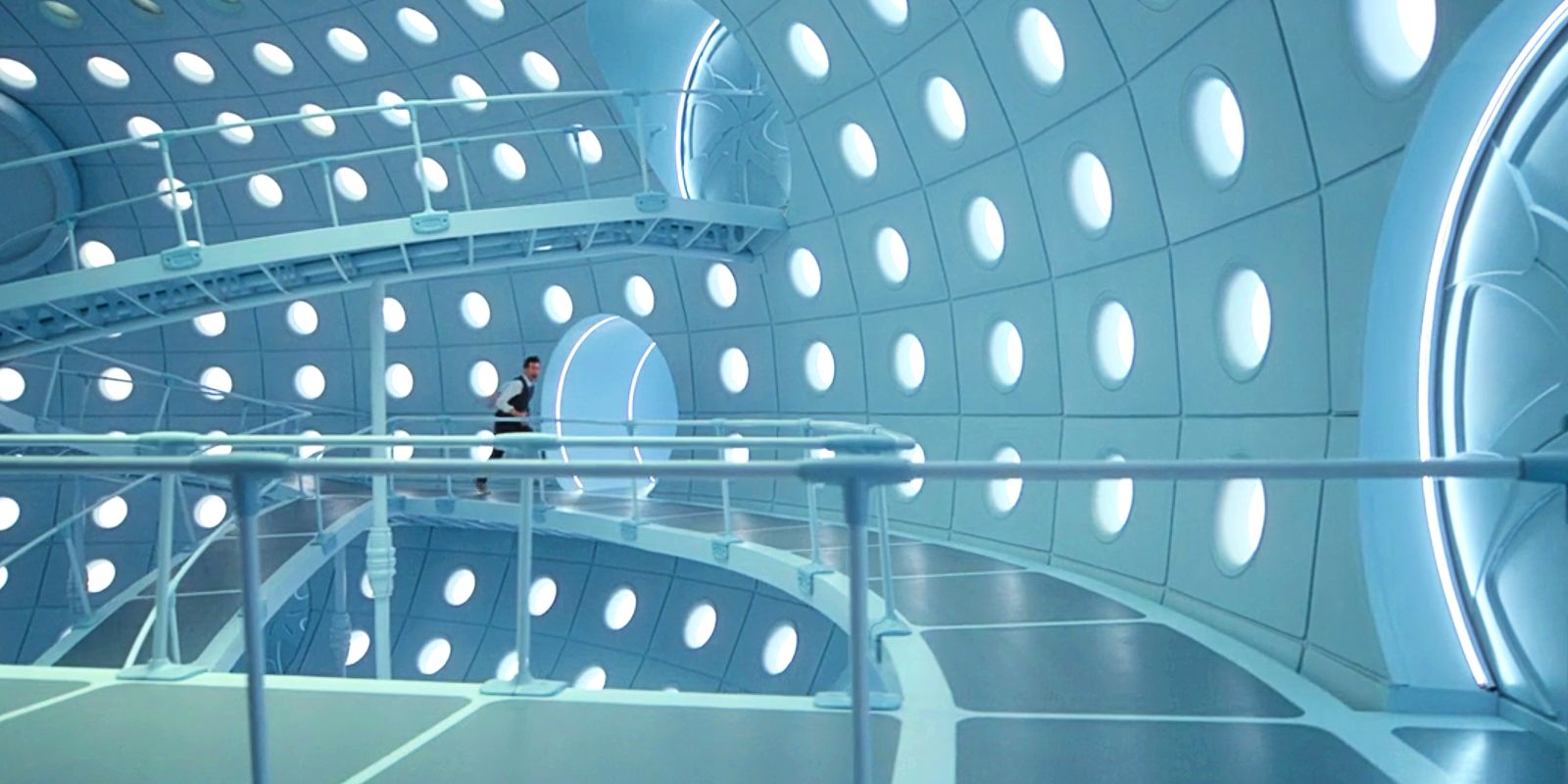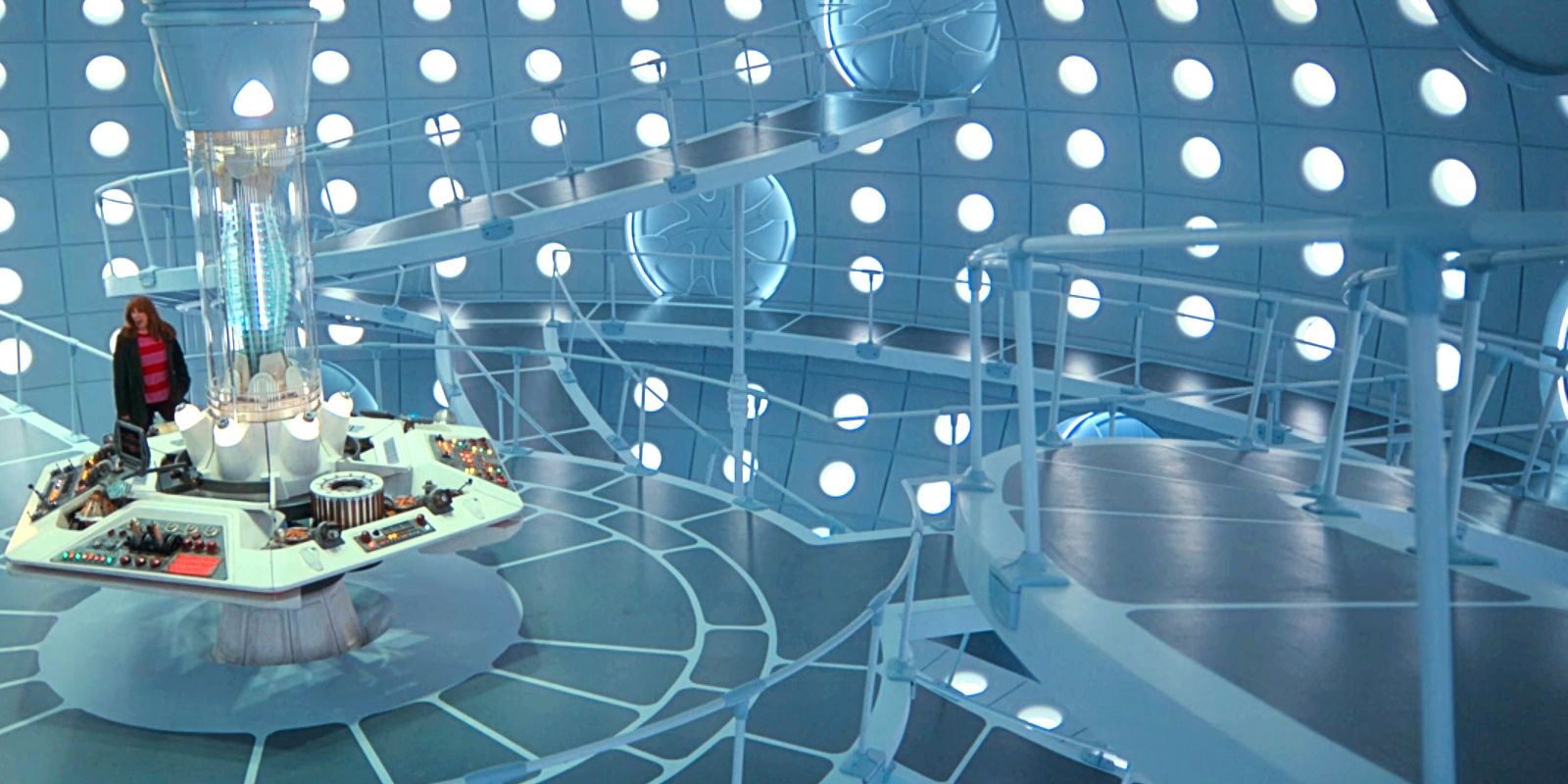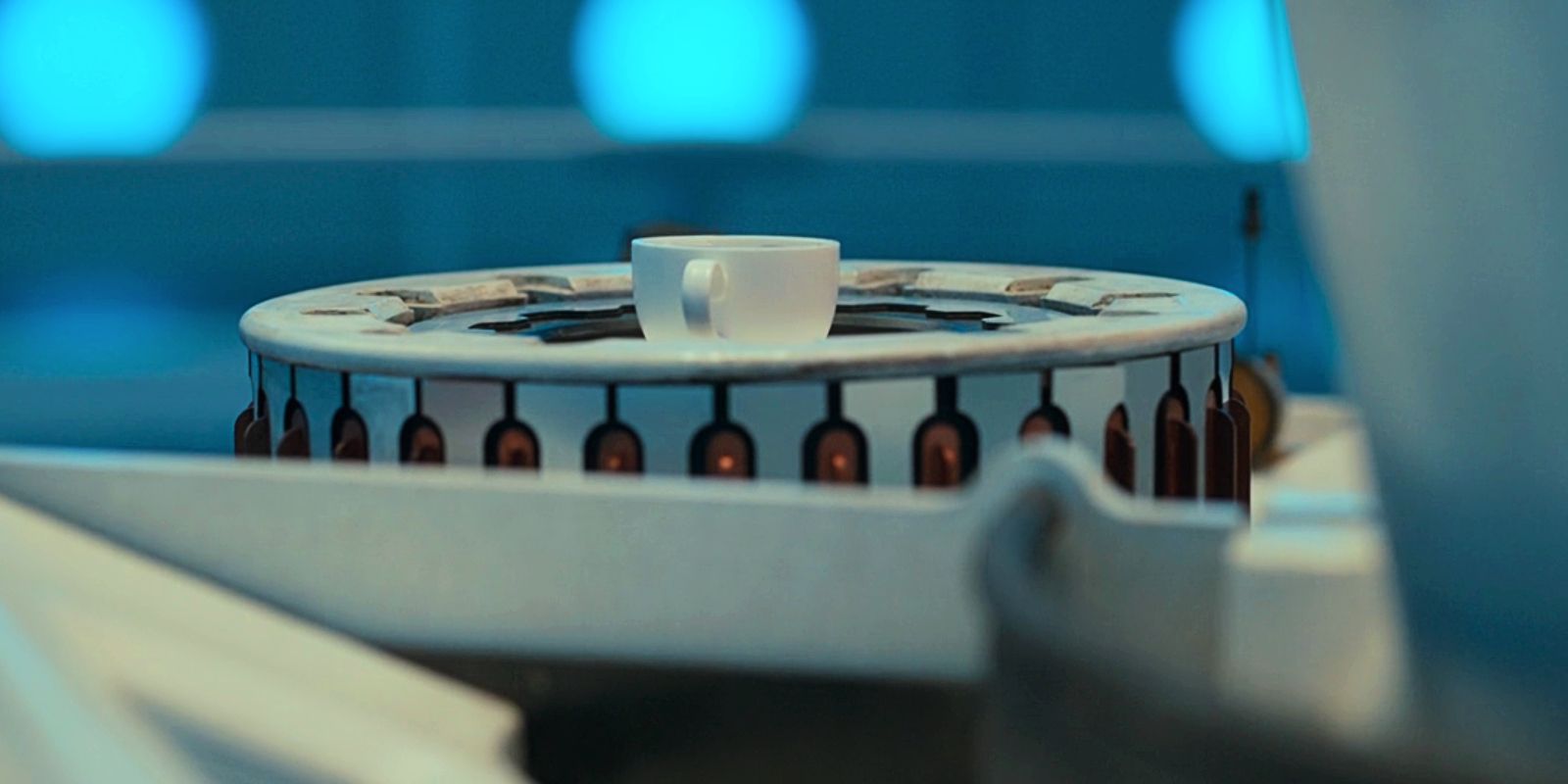Doctor Who’s New TARDIS: 6 Best Details From The Groundbreaking New Design
The new TARDIS – debuted in Doctor's 60th anniversary special, "The Star Beast" – includes multiple new features and groundbreaking design elements.

Warning: This article contains spoilers for Doctor Who’s 60th anni
The Doctor Who 60th-anniversary special, “The Star Beast,” brought about a new TARDIS design with groundbreaking details and features. The inside of the TARDIS has changed shapes and size many times over the course of Doctor Who‘s 60-year run. Each design is catered to the specific personality and needs of the Time Lord’s current regeneration, allowing for creativity in the architecture and ambiance. Some of the most notable examples of this include the Thirteenth Doctor’s steampunk and the Eleventh Doctor’s chaotic control rooms.
With Ncuti Gatwa taking over soon as the Fifteenth Doctor, it was inevitable that the TARDIS’s control room would change to fit his version of the Doctor. Luckily, Doctor Who‘s budget tripled under the Disney+ deal, allowing for a large-scale redesign. The TARDIS’s new design boasts numerous new details that push the series forward and also pay homage to the last 60 years of Doctor Who.
One episode of the Doctor Who 60th-anniversary special is released every Saturday between the 25th of November and the 9th of December on Disney+.
6The Interior Of The TARDIS Is Bigger
The New TARDIS Truly Fits The “Bigger On The Inside” Description
In Doctor Who, the Doctor and companions have always described the TARDIS as small on the outside and bigger on the inside. While the description is technically accurate of previous iterations, Doctor Who’s new TARDIS interior is the first one that fully follows through on the promise. Rather than being the size of a small apartment, the new control room looks like a large ballroom with multiple levels and doors. The domed walls and ceiling add to the scope, making the TARDIS look even bigger than it would’ve with just a larger floor plan.
This changed design will significantly impact Doctor Who’s TARDIS scenes. Directors will have more areas in which to film, allowing for variation in angles and depth of field. Within the narrative of the show, the Doctor and companions will have more room to move around, as seen when the Fourteenth Doctor runs throughout the new control room in Doctor Who’s 60th anniversary special, episode 1, “The Star Beast.” The companions and the Doctor can also have space when needed, allowing for moments of emotional reflection.
5The Color Of The TARDIS’s Interior Changed
The TARDIS Now Sports A White And Gray Color Scheme
The TARDIS’s interior color has changed numerous times throughout Doctor Who with colors as wild as blue, orange, green, brown, rusty red, and silver. Rather than lean into the bold colors of many past regenerations, the new TARDIS interior uses white walls and ceilings with grey detailing. The only colorful parts are buttons and knobs on the hexagonal control panel. This color scheme is a callback to both the TARDIS interiors of Jo Martin’s Fugitive Doctor and William Hartnell’s First Doctor. Both of these previous iterations of the TARDIS included sleek white walls with bright white roundels. Still, the architectural design of the new TARDIS makes it different enough to feel modern and new.
4The Roundels Look Different In The New TARDIS
The TARDIS’s Roundels Are Now Organized And Colorful
Most of the previous TARDIS designs in Doctor Who incorporated the roundels within the walls themselves, but the new design takes a slightly different approach. In the most recent TARDIS update, the roundels are part of panels that combine to make up the walls. The arrangement makes the roundels linear and symmetrical with each other, providing a sleek and sophisticated look. On top of this, the roundels don’t just light up bright white; they also can change color. The Fourteenth Doctor shows Donna this feature, making the lights orange, purple, green, and blue.
This TARDIS interior was likely designed for Ncuti Gatwa’s Fifteenth Doctor since it would seem silly to make a new design for only three episodes. Very little is known about the upcoming Doctor, but Ncuti Gatwa’s description of the Fifteenth Doctor seemingly fits with the new appearance of the roundels. He described his character as emotionally vulnerable, humorous, and energetic. The basic design reflects the first trait, and the colorful addition fits the latter two. Gatwa’s Doctor will have more ability to express himself through lighting.
3The New TARDIS Interior Has Ramps
The TARDIS Is More Accessible Than Ever
The ramps are one of the most significant changes to the TARDIS interior design shown at the ending of the Doctor Who 60th-anniversary special, episode 1, “The Star Beast.” Previously, the TARDIS control room was either a single level or included stairs. The ramps make the TARDIS much more accessible to characters with mobility limitations, opening up the possibility that one of the Doctor’s companions could have a physical disability in the future. Since the writers of Doctor Who have made a concerted effort to include more diversity in the show, this seemingly minor design change is a massive step forward.
The addition of ramps helps with the cinematographic elements of Doctor Who as well. When two characters stand on different levels, a shot can look more dynamic and interesting. Space can be utilized more effectively for dramatic and narrative purposes. Also, multiple floors of connected blank space can emphasize how lonely the Doctor is better than a single-level floor plan.
2The Doors To Other TARDIS Rooms Received A Revamp
Doors In The Tardis Now Have A Distinct Appearance
While they are far less utilized than the control room, the TARDIS has hidden rooms in Doctor Who. Previously, the doors to these rooms either didn’t exist or were less noticeable, depending on the specific iteration of the Doctor’s home. Sometimes, they were hidden down hallways, making them impossible to see from the control room. Now, the doors are clearly visible and a prominent part of the new TARDIS interior design.
Each door in Doctor Who’s TARDIS is rounded with LEDs lighting up the entrance. Based on the design, they seem to open in a radial direction instead of swinging on a hinge. This gives the doors a futuristic feeling akin to a spaceship. The doors also fit well with the rest of the interior because the control room, roundels, and ramps all utilize a curved and smooth design. Everything seems to connect with each other, rather than feeling disjointed.
1The TARDIS Has A Coffee Machine
Passengers Aboard The TARDIS Can Get Their Caffeine
The new TARDIS control console includes a futuristic coffee machine. When making Donna a coffee with milk, the Doctor presses a few buttons, and the drink rises out of a cylinder. This is similar to the early days of Doctor Who in which the TARDIS contained a machine that would provide food to passengers. The new addition will offer a cozier feeling to the TARDIS control room. Passengers will have something they can hold in their hands while talking and a warm drink when it’s cold. Hopefully, after the events of the Doctor Who 60th-anniversary special, the TARDIS will think to waterproof the control console, though.
versary special, episode 1, “The Star Beast.”








